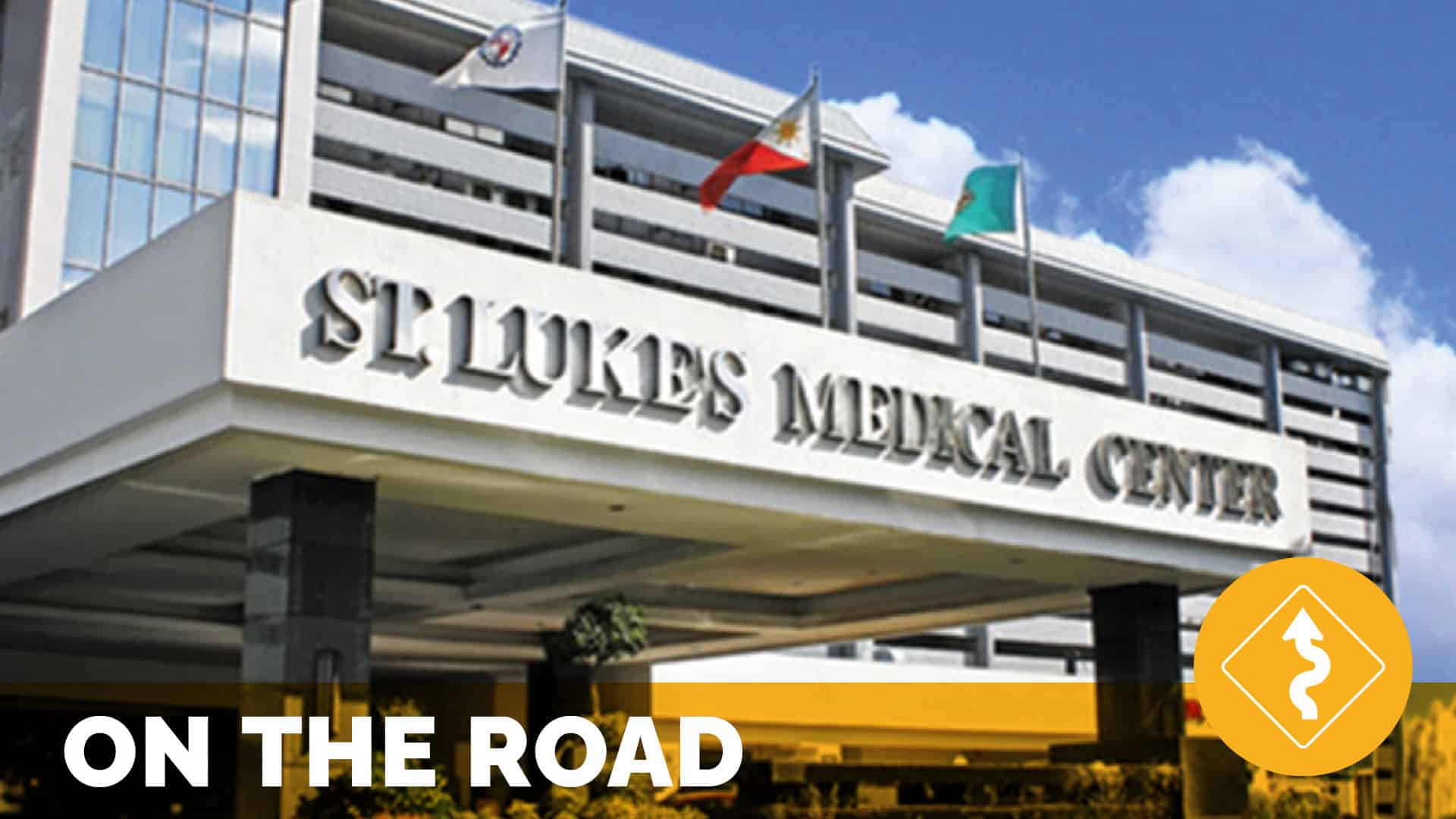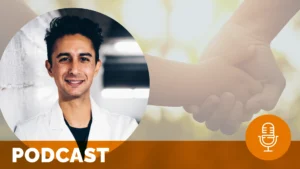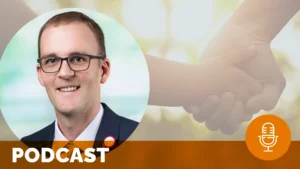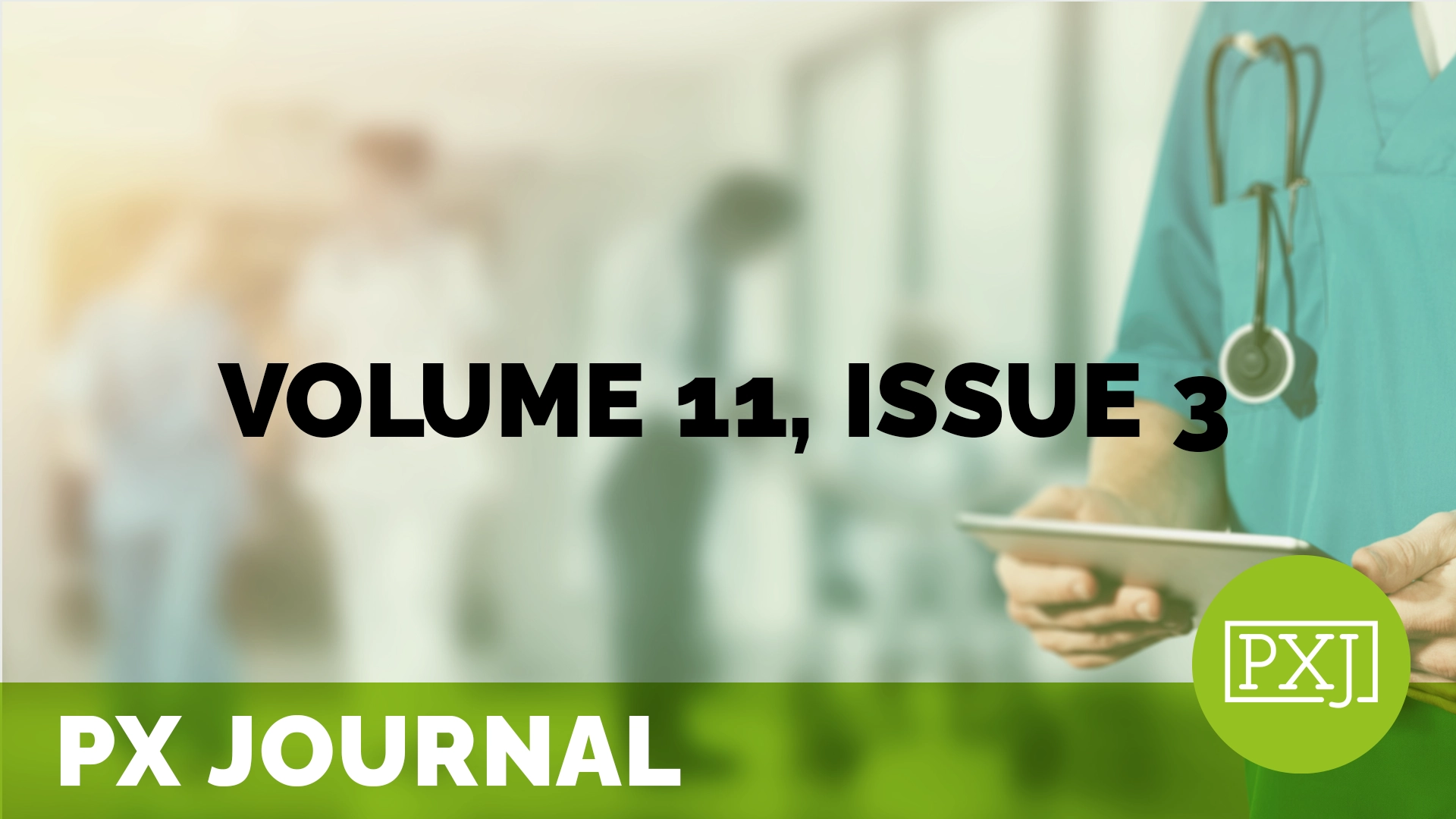Delivering Quality Service Through Quality People

On the Road with St. Luke’s Medical Center in the Philippines – January 2018
by Jason A. Wolf, PhD, CPXP
I start the year by sharing the observations of the last visit I had in 2017. I was honored and privileged to be invited to St. Luke’s Medical Center (SLMC) to learn from and with the team at St. Luke’s and also engage in an historic event hosted by the organization – The 1st Asian Patient Experience Scientific Meeting. This was an incredible step for the patient experience movement and one encapsulated in the fact that this visit represented the fifth continent on which I would be engaging in conversations on the critical role of patient experience in healthcare in 2017. It reinforced that this work is truly global.
During my visit to SLMC I was fortunate enough to meet with the staff and leaders of both major hospitals St. Luke’s Quezon City and St. Luke’s Global City. As an organization with a long and significant history in the Philippines, a mission explicitly saying, “the needs of our patients come first” and a stated vision to be a globally recognized healthcare organization by 2020, I found St. Luke’s was well poised to realize these objectives.
From the moment I was met by the team there was a graciousness and level of energy and commitment to purpose that was palpable. As a complex academic medical center, SLMC was quick to reinforce its strength, beyond its contribution to healthcare in practice, research and education, was that of inspired and dedicated people. This was evident in every step I took during my visit. While a short article cannot convey all I saw in the spirit and commitment of the people of St. Luke’s, I offer a few highlights to show the team at SLMC is a growing voice to be reckoned with in the global patient experience movement.
A Commitment to Those In Our Care
There was an evident commitment to quality and service in every interaction I observed at St. Luke’s, from the smiling team members greeting people at the front doors to the way people engaged in the hallways, offices and nurse’s stations. While many of the core practices central to patient experience excellence were in effect, what I found at St. Luke’s was an extensive and well structured commitment to experience excellence. With experience officers located in all facilities to both address the needs of those receiving care, but also help coordinating the efforts of the SLMC team members to ensure these needs were met, it was clear there was a commitment to those receiving care.
A commitment to the human experience
From stories about how birthdays and weddings were celebrated being driven by staff and concierge team members, to the more powerful examples of powerful efforts to meet the unique needs of patients and families. One example was provided in the pediatrics unit at Quezon City where a long-term patient has been in the pediatric ICU for most of his 4-year-old life. They had done all they can to care for him and his family and to ensure they feel both welcome and part of the family. That pediatric unit was clearly making a difference for the families they served as evidenced by the note and artwork they receive.
Another part of my visit took me to the Pulmonary Care Unit at Quezon City. In speaking with the team, it was evident there was a commitment beyond just clinical excellence. The key theme that they shared for their unit is “where caring feels like home”. That was more than words for the team, but central to their daily interactions.
These kinds of efforts continued to present themselves during my visit. One example was a program that captured photographic portraits of past oncology patients. These were created with the intention to inspire and motivate current patients. Another was a commitment to serenading patients and family members for almost any occasion imaginable. This spirit of a commitment to the humanity in healthcare was unwavering.
A commitment to engagement
This commitment was also evident in more formal ways, first in a powerful model of patient and family engagement which reinforced a central observation and belief we have held at the Institute. That quality, safety and service are all part of the experience people have in healthcare. The program, part of the organization’s Quality and Patient Safety Group is driven by the SLMC Patient and Family Engagement Council and is focused around one central philosophy – that patients are now partners. Even in this elevated effort that over the last few years has ensured a great focus on quality, safety and overall engagement, the team recognizes the effort to evolve into a more patient centric effort, expanding into a more formal patient and family advisory role and expanding the engagement of patient and family members even further.
A commitment to access
This idea of personal engagement is also central to St. Luke’s rapidly growing concierge effort. While in many cases concierge services are geared at only certain patients, SLMC has made a powerful commitment to provide concierge services at multiple levels and in expanded ways. Beyond a commitment to those that may have means, SLMCs concierge services also help those individuals needing guidance and support in entering the care system, aligning insurance needs with care, all in a very welcoming way. This effort, the first hospital-based medical concierge in the Philippines, is designed to serve as a one stop shop as individuals engage with SLMC and make the healthcare experience seamless for all engaged. This exemplifies a true commitment to ensuring access to care that is not only easy and seamless, but that is understandable as well.
This level of commitment is also seen in St. Luke’s commitment to international patient’s as well. SLMC is rapidly becoming a regional provider of medical tourism and has worked hard to be a leading care provider in the region. It has linked it services to many global insurance providers and works with patients and families to coordinate all care details, connect them as needed with the patient experience team and overall ensure the best in experiences at St. Luke’s a place they choose to visit for care from even great distances.
A commitment to excellence at all touchpoints
I was excited to have a chance to visit one of the major outpatient clinics as well during my visit to explore both front of the house and back of the house efforts to impact the patient experience. In visiting the Pathology Clinic, while Dr. Paulo and his team will say they are not where they aspire to be yet, they have built an incredibly efficient and integrated system for seeing patients with speed, quality and comfort. From check in processes that expedite intake, to the equipment to ease the work of phlebotomists, to lab processes that track progress of analysis and make data and results available in usually 2-4 hours. They have turned what can be both a laborious process for patients into a proactive process of care and simultaneously driven efficiencies in lab processes to more rapidly meet the needs of peers needing results to make critical clinical decisions.
On top of these efforts, was a constant effort to track wait time, hit rates of blood draws, tracer processes and timing of various analytics path in the lab. I can say I have not seen many efforts like this that were not just about improving the service for itself and its processes, versus making clear and measurable commitments and adjustments to meet the needs of the people served – both clinicians and patients and families. We often overlook these areas of our services that if given some focus can go a long way in positively impacting the experience of those in our care. It was evident in just these few examples I shared that St. Luke’s was working to find these opportunities at every touch point possible.
A Commitment to People
Turning back to what was shared with me as I started my visit, that the efforts of St. Luke’s were driven by inspired and dedicated people, I can confirm I experienced not only good people doing good work, but also the organization’s commitment to its own people. While there we many little things taking place throughout SLMC to exemplify this effort I share a few here to highlight the critical point that we cannot overlook a commitment to those delivering experience in healthcare if we aspire to provide the best in experience overall.
The first example of this effort was through a commitment to executive rounds. As much as our patients should experience regular rounding, the people that comprise our healthcare organizations can benefit from this practice too. By having leadership out and in front of those delivering care, communications and priorities can be reinforced and data and information can be gathered in the interest of thoughtful continuous improvement. There are many models through which this practice can be implemented, but I have now seen it in practice across national systems and global cultures and it remains a central and significantly valuable practice to implement.
The commitment to people at St. Luke’s was also exemplified in a more formal means, in a commitment they have taken on to with the Pathways to Excellence program offered via the American Nurses Credentialing Center (ANCC). Per the ANCC, the Pathway to Excellence® Program is “a new organizational credential to recognize healthcare facilities that have created positive work environments where nurses can flourish. Pathway-designated organizations are deemed the best places to work for nurses, with high nurse satisfaction and retention. Research shows that healthy work environments improve not only nurse satisfaction but also patient satisfaction and quality of care.”
At St. Luke’s, the nursing teams took on a focused and fun means to express the nature of their teams and their work environment. They presented highlights of their clinical focus, efforts at continuous improvements, overviews of their team members and more. Each team built a board located in each nursing unit to express their commitment and as many of the nurses I talked to expressed, they were excited by the chance to focus on this effort as an acknowledgement that their work reached beyond just clinical practices to the very efforts of the hospital itself.
As one nurse offered, “The impact of this work is that we all feel more involved. We feel like we now have direct hands involved in the broader work of the hospital, not just our day-to-day patient care. And we feel more encouraged to participate.” As we explore this further it was evident this focus on and commitment to the work environment addresses some of our greatest challenges in healthcare. I asked directly if this helps to combat workload pressures or even clinical fatigue with a few of the nurses I met and they all acknowledged that being involved in the larger purpose reinforces their individual sense of value and re-instills a commitment to the larger cause of the organization, reenergizing them and helping them feel more engaged.
Stories of connection to each other and patients and families were consistent throughout my visit and my feeling was that St. Luke’s had a very embedded sense of experience. Perhaps part of this was a cultural characteristic of compassion and care as one leader shared. But there was also a recognition that no matter the culture in which healthcare is provided, the challenges and stresses remain the same. Herein lies a central opportunity in addressing the human experience in healthcare overall, to care for those who care in ensuring best in experience for all receiving care.
This idea of supporting the caregiver was also exemplified in the incredible commitment to the Daisy Award Program and seeing numerous nurse throughout the facility celebrating their Daisy recognition. (If you do not know about the Daisy program I encourage you click the link above.) In addition, St. Luke’s is also committed to acknowledging the work of its people and started a simple, but important recognition program called the HERO Award. HERO stands for Hospital Employees Reaching Out. This sprung from people seeing positive comments shared in patient survey results and the opportunity to highlight exemplary actions, celebrate and shared them and acknowledge those who took those actions. A simple idea such as this has a profound opportunity to change how people think and act in healthcare organizations today.
A Gathering Point for Experience Excellence
This balance of a commitment to those receiving care and those delivering it is the perfect example of a commitment to the human experience at work. It is this intentionality that St. Luke’s brings to its work and as a results it has emerged as an exemplar in the region for experience excellence. This was seen in the second part of what brought me to Manilla – The 1st Asian Patient Experience Scientific Meeting. While it would take a whole article to summarize my notes on all that transpired over this two-day meeting, I can say that the over 400 people from across the Philippines that gathered from many healthcare institutions represented a powerful collection of voices in improving experience in healthcare. With a thoughtful line-up of speakers bringing in the strategic, political, practical, and personal lenses to the experience conversation, the team at St. Luke’s laid a large foundation for a continuing conversation on patient experience in Asia.
Much like the inaugural gathering I had the chance to attend hosted by Albert Einstein Hospital in Sao Paulo Brazil in 2016, this event too had the feeling of powerful beginnings, thoughtful conversation and inspired opportunity. I hope to see and am committed to support this growing effort in the region and see the groundwork laid by, and examples shared about St. Luke’s as being central to this effort overall. I walked away with expanded knowledge, new friends and reinvigorated hope that we can truly impact experience around the globe.
This may be no better exemplified than in an experience I has as we were finishing my visit at Quezon City Hospital. As we were working our way back to the conference room through one of the basement hallways a large group of students came walking by. From every one of them came a smile and a hello, though you could see in their eyes they were leaving from a learning experience that clearly had them drained. Yet there they were, representing a profession they were just choosing to enter with an example of so much of what I experienced at St. Luke’s. That when we acknowledge the human being in front of us, we do great things for them and for ourselves. That is the essence of driving the best outcome through the best people and at the end of a long and full day of learning, those smiles, were just the thing I and I know many of the others they passed needed. That is the human experience and it is the opportunity we all have right in front of us. Thank you, St. Luke’s, for this important reminder.
Related content
-
 Culture & Leadership
Culture & LeadershipTo Care is Human – LIVE! A Conversation with Dr. Owais Durrani
Recorded live at ELEVATE PX 2025, this episode of To Care is Human features Jason Wolf and Dr. Owais Durrani. Listen in as they discuss his journey in healthcare, the role of AI, and the importance of equitable care. Key takeaways included the need for ethical AI use, the critical role of communication in hospitals,
Learn more -
 Culture & Leadership | Staff & Provider Engagement
Culture & Leadership | Staff & Provider EngagementEnhancing Patient Experience: A Night Shift ER Doctor’s Passion Project
Dr. Donald Wickline of Cone Health, drawing from his experience as a night shift emergency room physician, explores the art and science of communication from a staff/provider engagement perspective. He highlights Cone Health’s C.U.R.O. communication model as a crucial framework for navigating sensitive and critical conversations with patients. This model provides physicians, including Dr. Wickline,
Learn more -
 Culture & Leadership
Culture & LeadershipA Role Discovered: Exploring Northwell Health’s Patient Experience Structure and Leadership Characteristics
Examining the evolution of healthcare, leaders in patient experience (PX) have played a pivotal role in shaping a more compassionate and human-centered landscape. This three-part multi-modal descriptive study aimed to investigate shared traits, skills, and characteristics among PX leaders in hospital settings. Employing a transformational leadership self-assessment tool and a guided interview process, recurring themes
Learn more
